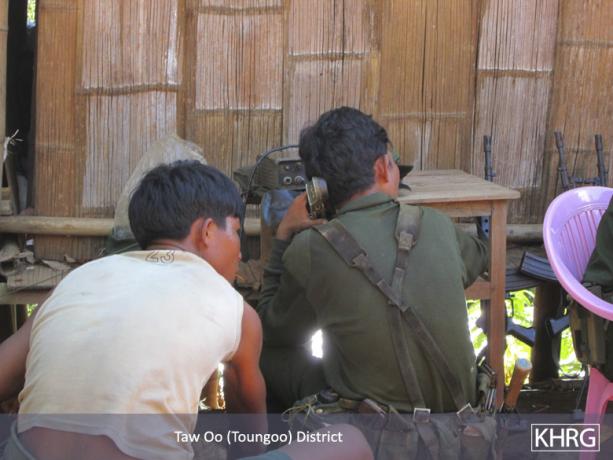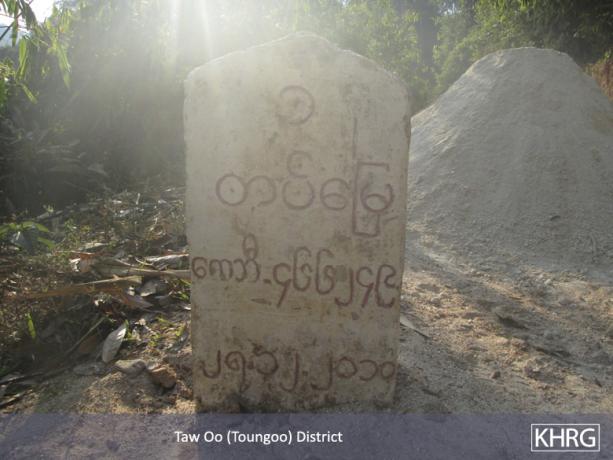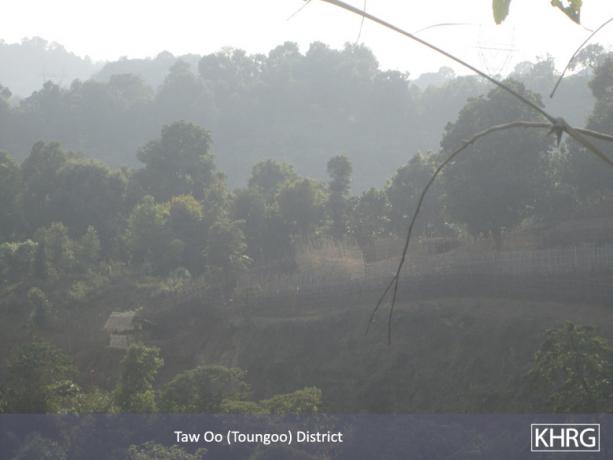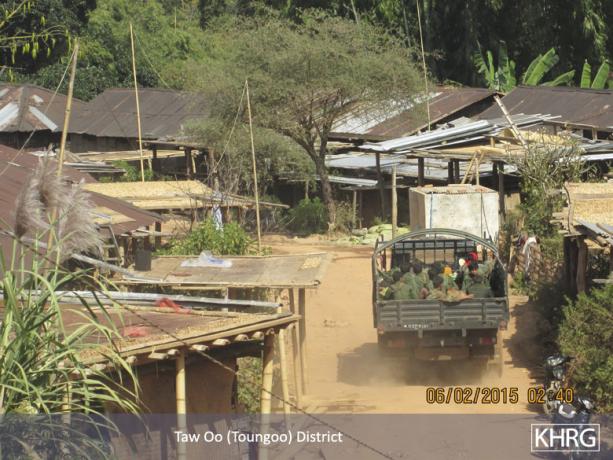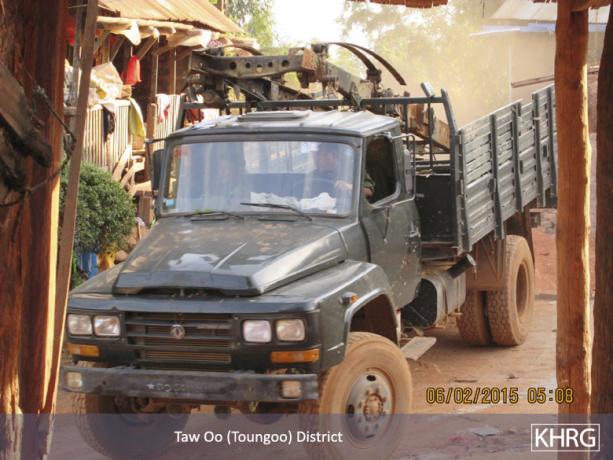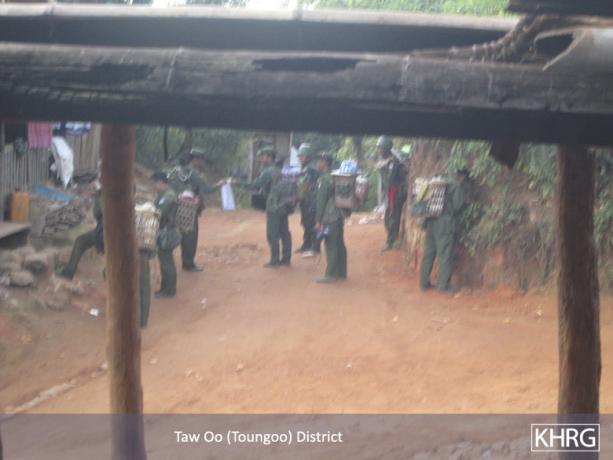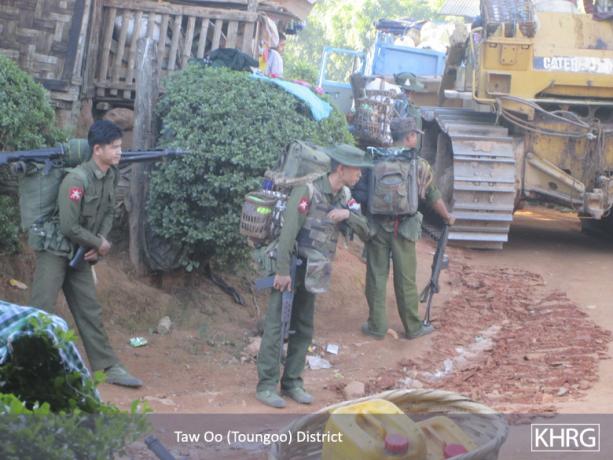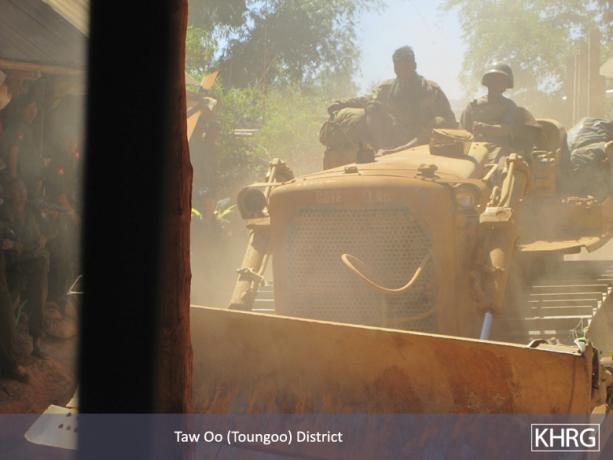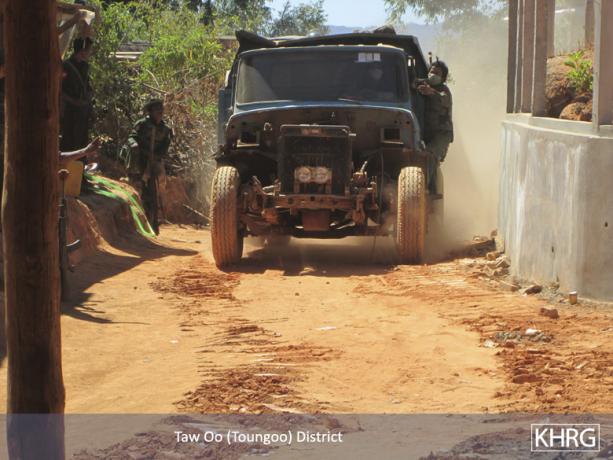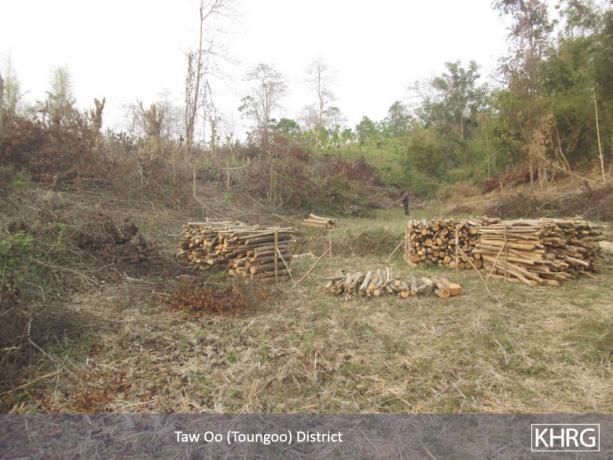This Photo Set shows militarisation and land confiscation by the Tatmadaw, military rotations, transportation of rations, road repairs for military use, and land confiscation for military camps in Htantabin and Thandaunggyi Townships, Toungoo District between November 2013 and March 2015.
Photo Set | Htantabin and Thandaunggyi townships, Toungoo District (November 2013 to March 2015)
The following photos were taken by community members in Toungoo District who has been trained by KHRG to monitor human rights conditions. They are presented below, censored where necessary for security purposes.[1]The 12 photos below were received along with other information from Toungoo District, including 968 other photos, 11 video clips, three general updates on the situation in Toungoo District, three incident reports and 28 interviews.[2]
Footnotes:
[1] KHRG trains community members in southeast Burma/Myanmar to document individual human rights abuses using a standardised reporting format; conduct interviews with other villagers; and write general updates on the situation in areas with which they are familiar.
[2] This Photo Set was compiled by KHRG office staff and is based on information from a community member from Toungoo District who has been trained by KHRG to monitor local human rights conditions. In order to increase the transparency of KHRG methodology and more directly communicate the experiences and perspectives of villagers in southeast Burma/Myanmar, KHRG aims to make all field information received available on the KHRG website once it has been processed and translated, subject only to security considerations. For additional reports categorised by Type, Issue, Location and Year, please see the Related Readings component following each report on KHRG’s website.
[3] A Tatmadaw Light Infantry Battalion (LIB) comprises 500 soldiers. However, most Light Infantry Battalions in the Tatmadaw are under-strength with less than 200 soldiers. LIBs are primarily used for offensive operations, but they are sometimes used for garrison duties.
[4] A Military Operations Command is composed of ten battalions for offensive operations. Most MOCs have three Tactical Operations Commands (TOCs), made up of three battalions each.
[5] Htanay Phyithu Sitt A’pweh, or ‘Thaundaung Peace Group’, is a local militia located in Toungoo District. The group split from the Karen National Union in 1997 and was initially led by Khe R’Mun. Reports from the field claim that they are currently led by General Bo Than Myin, have around 300 troops stationed at Leik Tho Base (Battalion Commander Bo Kyaw Win), in Leik Tho Township, and an additional 40 soldiers at Pya Sa Khan Base (Battalion Commander Khin Maung Lwin), near Thandaung Town. It has been reported that they control a number of different illicit operations, including gambling and black market car licencing. They are also allegedly employed as security personnel by local companies and wealthy individuals involved in logging and mineral resource extraction, in addition to having direct involvement in the lumber and mineral business. Htanay Phyithu Sitt A’pweh should not be confused with Nyein Chan Yay A’pweh, which is occasionally translated as Peace Group but refers to the Karen Peace Army (KPA), aka the Karen Peace Force (KPF). Nor should it be conflated with Aye Chan Yay, another small militia group also operating in Toungoo District that the Thaundaung Peace Group has come into conflict with. It is also distinct from the KNU/KNLA-Peace Council, which is also sometimes translated as ‘Peace Group.’



